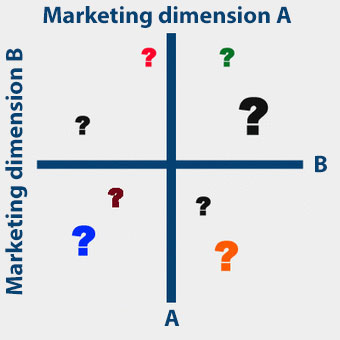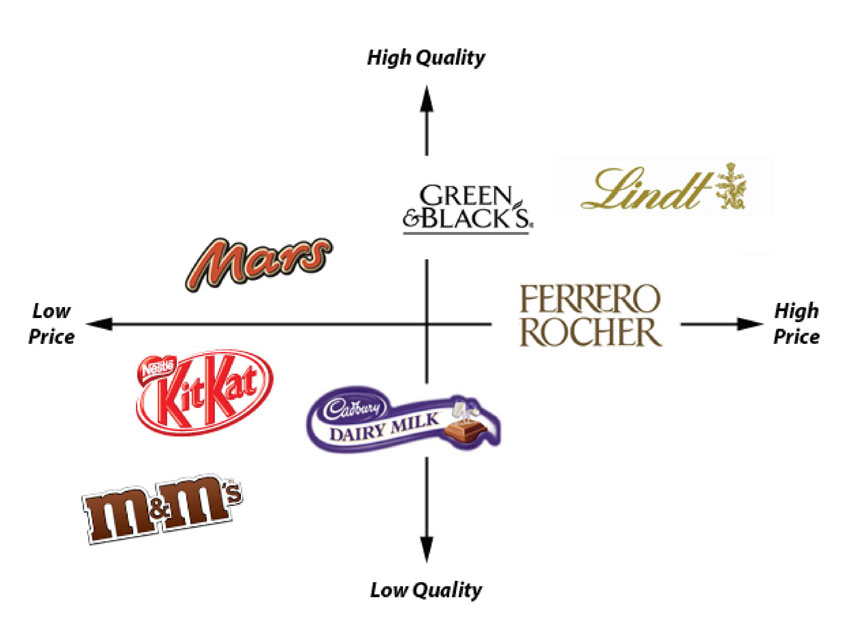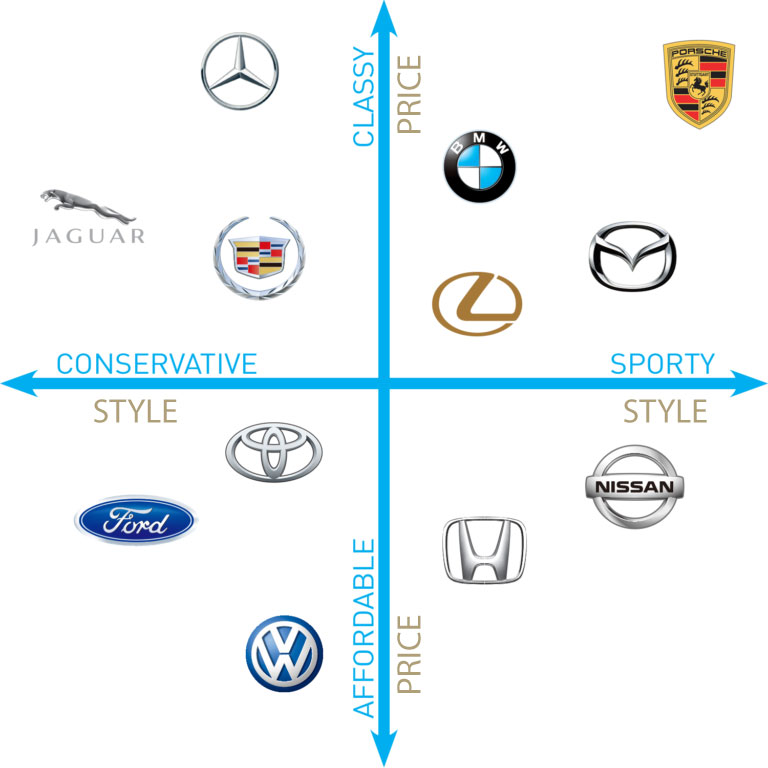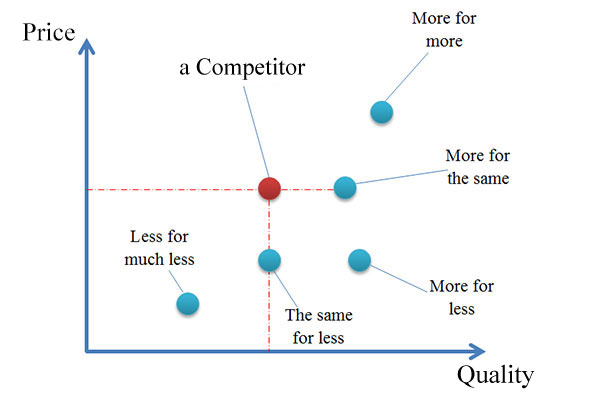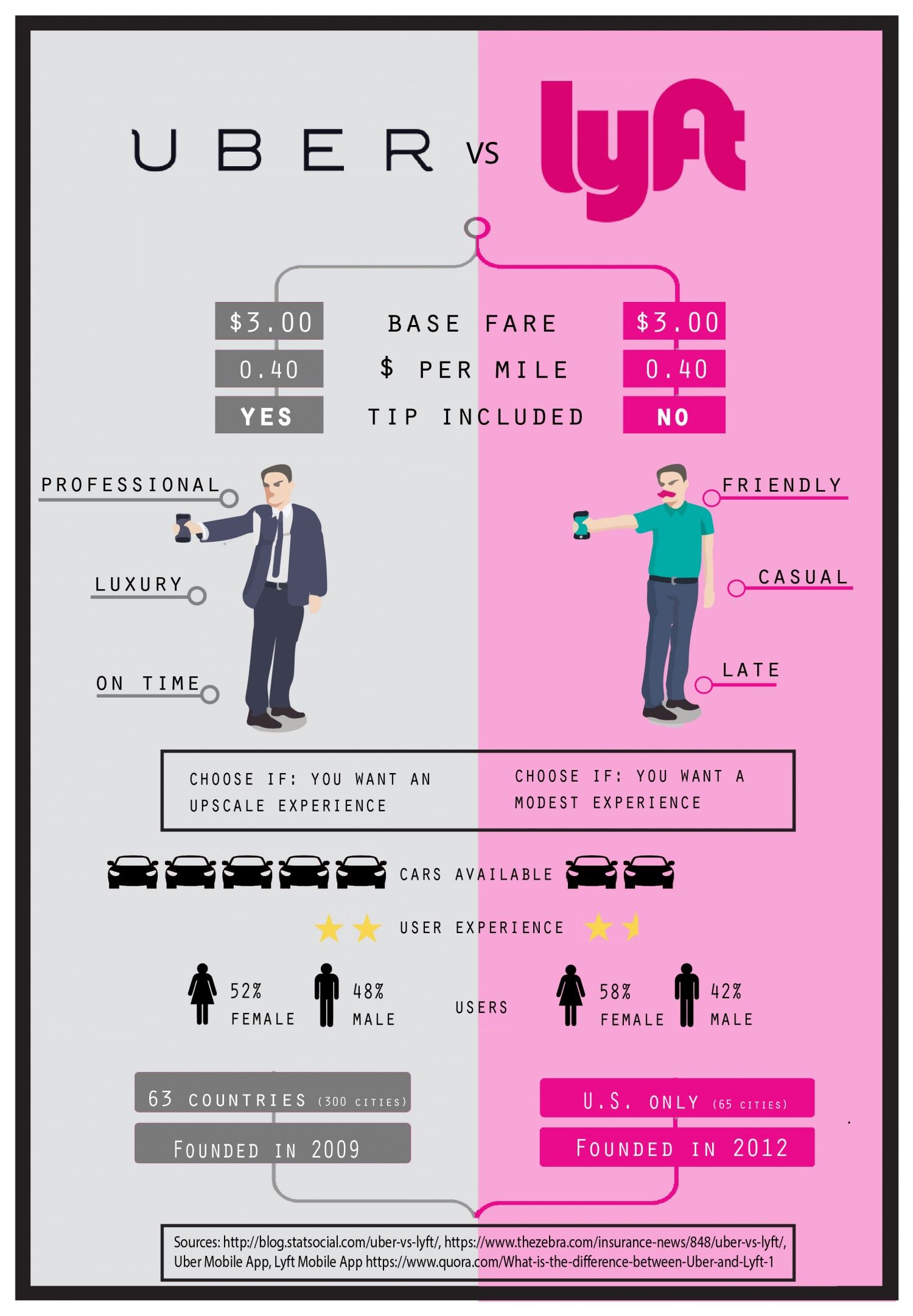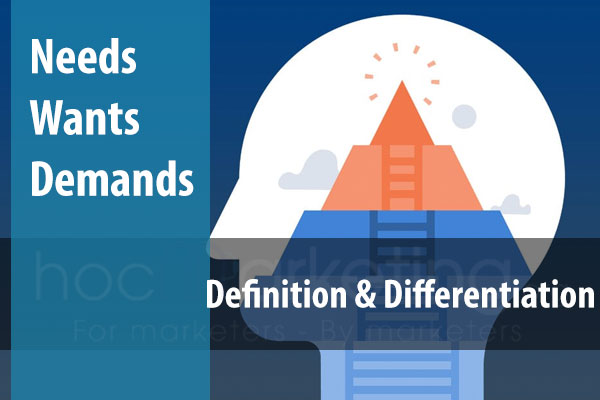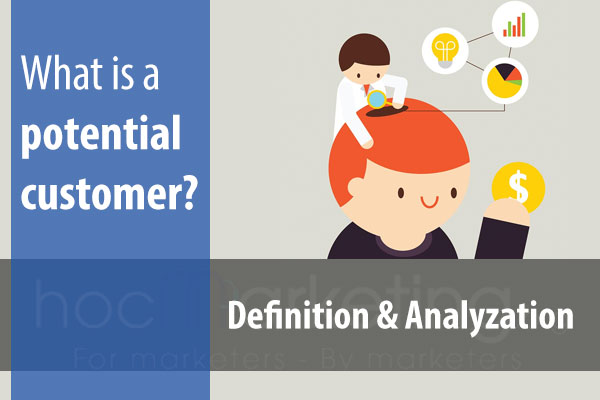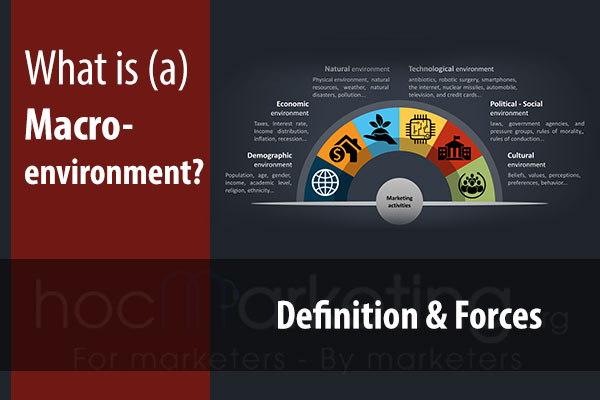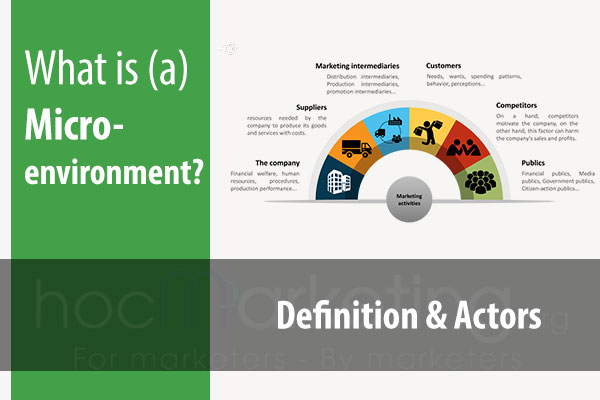
What is market positioning? Market positioning strategies

What is market positioning? What is a perceptual map? Popular market positioning strategies used by firms in over the world.
Market positioning is establising a clear, distinctive, and desirable place for a product/service which is relative to competing products/services in the perception of target customers. The occupied position can be defined by many dimensional aspects of a product/service, such as price, quality, atributes, benefits, style, usage...
For example:
Figure 1 is a perceptual map illustrating positions of some chocolate brands in the mind of customers. These positions are defined by 2 dimensional aspact: Quality and Price.
Figure 2 is a perceptual map illustrating positions of some car manufactures in the mind of customers. These positions are defined by 2 dimensional aspact: Price and Style.
BMW promises “Sheer driving pleasure”; Subaru is “Confidence in motion.” Coca-Cola wants you to “Taste the feeling”; Pepsi says “Live for now.” Del Monte is “Bursting with Life”; Cascadian Farm products are “Certified Organic. Guaranteed Delicious.” At Panera, you’ll find “Food as it should be”; at Wendy’s, “Quality Is Our Recipe.”
Such deceptively simple statements form the
In positioning its brand, a company first identifies possible customer value differences that provide competitive advantages on which to build the position. A company can offer greater customer value by either charging lower prices than competitors or offering more benefits to justify higher prices. But if the company promises greater value, it must then deliver that greater value.
Roles of market positioning in Marketing
Market positioning can be seen as a backbone of a product’s marketing strategy. Market positioning defines how a firm serves its target customers, how much customers will pay for is products/services, what are the promotional messages communicated to its customers...
Let's take Mercedes as an example. We may know that Mercedes Benz is a brand of luxirious cars. The firm has many lines of car and the number is still grow it launches into the market (a) new one(s) every year. However, all of them share some commons. Firstly, their prices are always higher than most of competing ones. Secondly, the cars are always designed and made to be luxirious, fashionable and gentlemanly. Thirdly, its services are runned by well-trained employees, which aim to satisfy customers at all cost. That is because Mercedes Benz has position itself as “fascination, perfection and responsibility”. And we can easily guess that if the firm continue to launch a new line of car under the brand of Mercedes Benz, the marketing strategy for the product must follow it market position.
Market positioning strategies based on price and quality
Price and quality are basic dimensions in market positioning. Based on such dimensions, there are popular market positioning strategies: More for more, more for the same, more for less, the same for less.
Market positioning strategies based on price and quality
1. More for more
"More for more" is a market positioning strategy in which a firm provides a better product/service and charges a higher price to cover the higher costs. A more-for-more market offering not only offers higher quality, it also gives prestige to the buyer. It symbolizes status and a loftier lifestyle.
Examples of "more for more"
Chanel, Rolex, Starbucks, Louis Vuitton, Mercedes... are brands which aim for superior quality, craftsmanship, durability, performance, or style and therefore charges a higher price.
Burj Al Arab hotel - A symbol of prestige, luxury and status in Dubai
2. More for the same
"More for the same" is a market positioning strategy in which a company offers a better product/service quality and charges the same price as one of its competing ones in order to attack its value proposition.
Examples of "more for the same"
For example, Target positions itself as the “upscale discounter.” It claims to offer more in terms of store atmosphere, service, stylish merchandise, and classy brand image but at prices comparable to those of Walmart, Kohl’s, and other discounters.
Coca Cola and Pepsi are the best couple of brands to represent this strategy. The price to buy a coke and the price to buy a pepsi are perfectly same as each other, in US as well as other countries. Both companies tries to improve their product quality each year. They also invest a lot in advertising and PR in order to deliver more values to their target customers.
3. The same for less
"The same for less" is a market positioning strategy in which a firm provides the same product/service quality and charges a lower prices its competing ones in order to have a price competitive advantage.
Offering the same for less can be a powerful value proposition— everyone likes a good deal.
Example(s) of "the same for less":
Vsmart, a brand coming from Vietnam has a price advantage in the low-medium segment of smarphone market. The firm aims to provide smartphones with same quality and lower price than its competitors (Samsung, Xiaomi, Huawei, Nokia...).
4. Less for much less
"Less for much less" is a market positioning strategy in which a firm tries to meet consumers’ lower performance or quality requirements at a much lower price.
While someone tries to seek high-class products/services, there are still a lot of people who look for products that offer less and therefore cost less. They do not have enough money to afford “the very best” in everything they buy. In many cases, consumers will gladly settle for less-than-optimal performance or give up some of the bells and whistles in exchange for a lower price.
Example(s) of "less for much less"
For example, many travelers seeking lodgings prefer not to pay for what they consider unnecessary extras, such as a pool, an attached restaurant, or mints on the pillow. Hotel chains such as Ramada Limited, Holiday Inn Express, and Motel 6 suspend some of these amenities and charge less accordingly.
5. More for less
"More for less" is a market positioning strategy in which a firm offers a higher product/service quality and charges a lower price than its competing ones.
Some companies do not seek profit in some periods. They are even willing to take loss in order to have a gain in market share. Therefore, more fore less is their top priority weapon which can help them to achieve such goal in marketing.
Example(s) of "more for less"
Uber and Lyft (in US) are perfect brands to represent "more for less". With the credo: "Winner takes all", both companies are willing to sacrifice their loss to win the market share. Let's look at these stats:
- "For all of 2020, Uber’s net losses amounted to $6.77 billion, around a 20% improvement from a staggering $8.51 billion loss in 2019" - from CNBC.
- "Net loss of Lyft for fiscal year 2020 was $1.8 billion versus a net loss of $2.6 billion in fiscal year 2019" - from investor.lyft.com.
